The Fermi Paradox: A Possible Solution From NASA Data?
The basic gist of the Fermi Paradox is why haven't we been visited multiple times over by intelligent extraterrestrial life? I just want to expand upon a possible answer with new data recently released by NASA. But if you want to go over the Fermi Paradox, here is a good explanation of the whole thing.
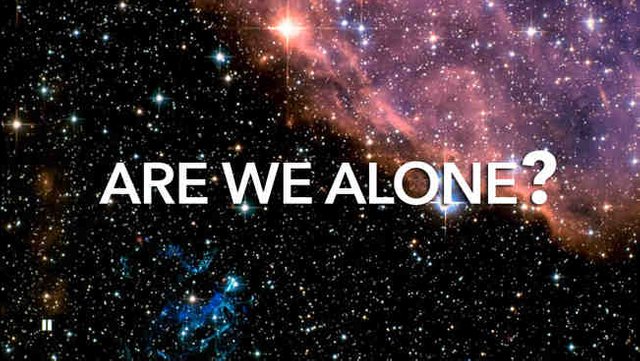
After the big bang the universe was made up of only hydrogen and helium (with some trace amounts of lithium). By atomic weight there was 75% hydrogen and 25% helium, and they were not spread out evenly – and that’s good because if it was even then nothing would have happened if the molecules were pulled by an equal gravity in all directions. These gas fields came together to form the first stars. They lived their lives until their fuel was used up and they fused heavier elements as those first stars turned into red giants and eventually exploded in powerful supernovae – seeding the universe with this matter. This matter of which some is now inside you, you are made up of star dust as they say. That was the first generation of stars, and they were massive at 20-130 solar masses(Our sun is 1 solar mass), and short lived as far as star lifetimes go - most going supernova in 3-4 million years. These are called Population III stars, and they started forming approximately 400-600 million years after the big bang. Some theorize there might have even been two generations of this type. No stars like this have been observed.
Then Population II (metal-poor) stars were born and they too lived their lives, finally creating all the other natural elements of the universe with their eventual explosive deaths. Scientists have observed only a few of these stars still burning.
Finally, on a spiral arm of the Milky Way, it was time for our own star to be born some 4.6 billion years ago – 9 billion years after the big bang. It is considered to be metal-rich, with 1.4% of it made up of things other than hydrogen or helium, a Population I. Stars like ours have a life span of about 10 billion years.
Now the universe had enough of the higher elements to form rocky planets, and on our little rocky world one funny thing happened. Life.
Now we are looking for other intelligent species out there but aren’t finding any, so what’s going on? This is called the Fermi Paradox, and it has many questions and possible answers – but I want to go over an answer that was derived from a recent study from data collected by NASA.
We might be the first.
NASA reckons that when our star was formed those 4.6 billion years ago, that only 8% of the potentially habitable plants that will ever be created existed then. So 92% of the planets that have a chance of creating life have yet to be formed, or are behind us in development. And the universe has another 100 trillion years to go before the last star burns out.
"Our main motivation was understanding the Earth's place in the context of the rest of the universe… Compared to all the planets that will ever form in the universe, the Earth is actually quite early." -- Peter Behroozi of the Space Telescope Science Institute
Formation of higher elements and then Gamma Ray Bursts(Credit:National Science Foundation)
Ahh, but that 8% still includes a ton of possibilities. Our Sun is considered a younger intermediate Population I star, with the majority of older Population I in our galactic center. A dangerous place as the stars are more close to one another, and those being the earliest stars they would have been subjected to the differing rays of the exploding supernovas of the ending generation II stars. Or increased gamma ray bursts from those stars remnants. While far out in the arm, we had some distance between us.
“Gamma ray bursts (GRB) can have harmful or destructive effects on life. Considering the universe as a whole, the safest environments for life similar to that on Earth are the lowest density regions in the outskirts of large galaxies. Our knowledge of galaxy types and their distribution suggests that life as we know it can only exist in about 10% of all galaxies.” – Wikipedia
It is estimated that life on Earth has been affected by GRB’s about once every 5 million years on average. Some believe that the Ordovician–Silurian extinction events of approximately 450 million years ago in which a 10 second GRB within 6,000 light years depleted half the ozone layer, exposing life to high levels of ultraviolet radiation. Experiments of this hypothesis showed that up to 16x the normal levels of DNA damage would occur.
And that is from as far away as 6,000 light years. Imagine a life bearing planet in the galactic city that is the core. It would occur much more frequently, all but ending the chance for life to evolve towards intelligence – if at all. And that was only 10 seconds, they have observed GRB’s up to a length of two of our days.
Ok, so the core seems like it will just fry all life. What about the far end of the galaxy, surely you would be subjected to far less chance of GRB’s.
Yes, but the chances of having enough metals and higher elements also diminish. Without sufficient amounts of these elements the chance of forming rocky planets is low. So you want to be in the middle, the so called galactic habitable zone. Michael Gowanlock calculated that 75% of habitable planets are tidally locked to their star. That means one side would always face the star and be scorching hot, and the other side is perpetually cold and dark.So we have just 8% of potentially habitable planets already created, with only 10% of galaxies having the possibility of supporting life – down to 0.8%, and only 25% of those not tidally locked – a 0.2% chance of developing into complex life on a non-tidally locked planet. Still a lot of planets, but then we would have to figure out the chance of intelligent life forming AND being around at the same time frame as ourselves.
Because we have only had the capability to send signals for less than the last 100 years, and our noise has only reached about 2,000 stars so far. The chances of any life capable of receiving that signal – if they are looking in the first place- is just so improbable. We would have to be at or around the same technological level to even realize what we are looking at. If they were even just like we were 200 years ago they wouldn't hear it, and if they are 200 years in the future would they still be listening to those types of signals? It would be like going to 100 cities in a row and randomly talking to a person, and then find out you were born on the same day of the same year. What are the chances?
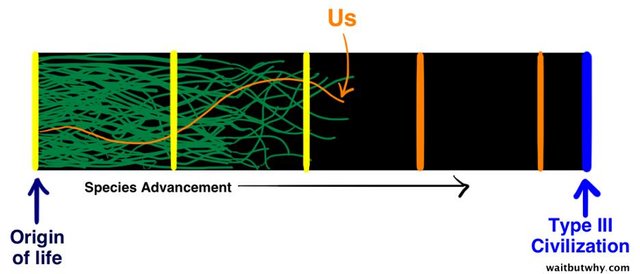
We have been listening and haven’t heard anything either. So could it be true, could we be the first species to evolve intelligence and a technological level enough to get into space?
Are we looking at a vast virgin universe untouched by intelligent life? Or is that thinking the same as when people believed the planets and Sun revolved around Earth?
Let’s think that this is true, and we will find nobody else, that we are the first and the most advanced species in our galaxy or the universe. What does that mean to us, what are our responsibilities?
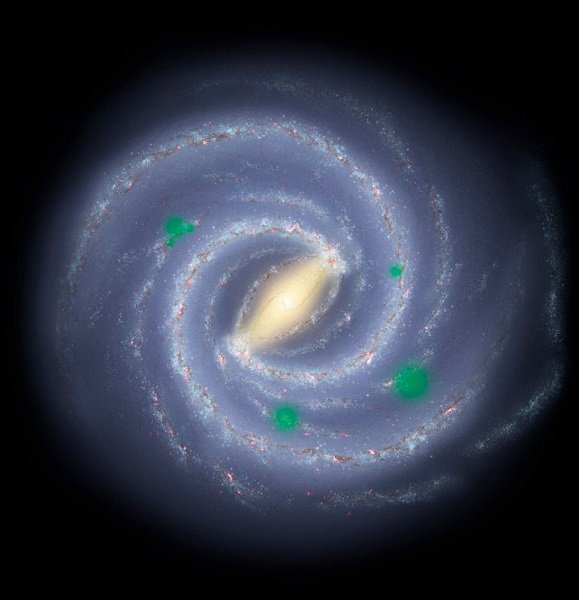
Credit: NASA/JPL/R. Hurt
According to this study, life spreads like a virus. Either travelling on asteroids like in the proposed pansermia theory, or by intelligent planning.
If we went around spreading life onto suitable planets, would we become the ancient species of science fiction?
That we bring life to the universe, and leave our long forgotten ruins for them to explore and theorize about us? Is this how we live on, by leaving life with our Earth DNA wherever we can? That our ‘Johnny Appleseeding’ of planets would create a future universe filled with interesting forms of life, with the idea that they become sentient? Is that our responsibility if we find the galaxy void?
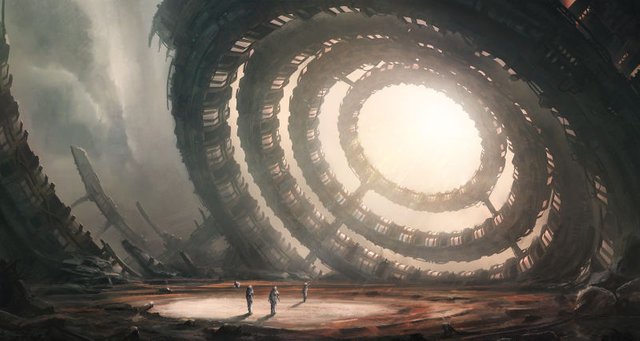
Ultimately this is just an interesting idea based off some facts and theories. I think it was the plot mechanism in Star Trek that explained why all the intelligent species were similar looking, and it was revealed in an episode of Star Trek:TNG.
The universe is out there awaiting us, and we have no idea what we will find. But if we don’t get out there it will be a much emptier place than it already probably is.
Let me know what you think about these questions down below in the comments.
Sources
- Astronomers Publish New Map of Galactic Habitable Zone
- Earth Bloomed Early: A Fermi Paradox Solution?
- Life Might Spread Across Universe Like an 'Epidemic' in New Math Theory
- Most Earth-Like Worlds Have Yet to Be Born, According to Theoretical Study
- Formation of the High Mass Elements
- A Mathematical Twist on the Fermi Paradox
- Stellar population
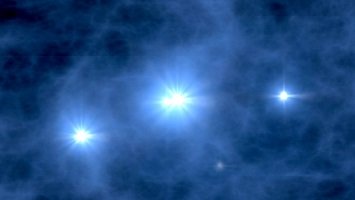
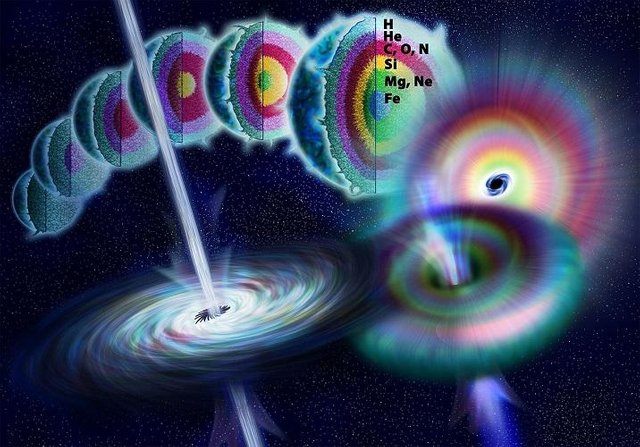
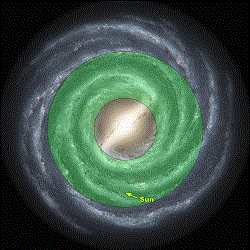
My solution to fermi paradox and probably the most correct solution...
We are just 2% different genetically from monkeys, we are no more than 6% different from any other mammal and no more than 20% different from ANY multicellular life on earth.
Monkeys our closest kin, communicate over long distances by howls and shrieks. We NEVER holler back. Monkeys can do nearly everything we can do and we know exactly how to make all the tech that any monkey could possibly conceive of. A monkey howling into the sky looking for other intelligent life would rightfully conclude there is no other intelligent life.
With just 2% difference between them and us, we barely recognize a monkey as anything more than a curiosity or lab animal. We most certainly don't find it worth our time to spend a great deal of time and energy attempting to communicate with them at their level.
I find it the height of hubris for us to listen to the sky, find no monkeys howling back in the EM spectrum in a way we are capable of predicting and deciphering, and concluding that somehow this is evidence that there is no intelligent life, or that we are somehow the most intelligent life out there.
What we are really looking for right now are are other monkey tribes howling into the EM spectrum during a time in their civilization that communicating this way made any sense at all. Yet even now, we are switching from communicating by modulating EM fields to communication by modulating coherent photons.
Consider even a high end pocket calculator made up until about 30 years ago...

I have a feeling that within 100 years we'll look back at electronics in general in the same way we do steampunk style "calculating mechanical devices".
Or the height in communications tech from when I was my kids age...

We don't even look this advanced to other civilizations yet.
They look at us and they just hear yet another breed of monkey, howling in the forest.

BINGO!
Thanks for such a great comment, and I disagree with none of it. I hit upon this issue in the post, but my main focus was to go over just one of the proposed answers to the paradox. The numbers seems so massive that there has to be many planets that have evolved intelligent life.
Again, this was just expanding upon one of the possible answers that has been made - and I have no idea which one is correct, but I also don't think we are going to know for sure for a long time yet.
Interesting stuff! Thanks for sharing!
I saw on the news a few months back that they found multiple planets that have earth like potential for supporting life in other galaxies...
Well, I am not sure about another galaxy - but they do find many exoplanets that seem to be possibilities. Right size, right compositions, right distance from their star. It is all very interesting, but still leads to the question "If there are so many planets that fit the bill, where are all the aliens?"
Maybe they aren't as developed as people like to think... maybe, just maybe... we are the one of the more developed race...?!
That's what I was thinking...
Who says we have not, and are not continuously being visited? Maybe we're just looking in the wrong places. ;) Thanks for giving me another topic to post on. Cheers!
I would like to read that! :D
It won't be my next post, but it's in the queue. :)
Nice post, I like your train of thought about us being the civilization that seeds life and our long time decedents are those that would be discovering the ruins of our civilization. That's an interesting line of thinking I hadden't traveled down before.
It does lead to some interesting stories in my head while I daydream. :)
"Let’s think that this is true, and we will find nobody else, that we are the first and the most advanced species in our galaxy or the universe. What does that mean to us, what are our responsibilities?"
I was just at a conference on exactly this issue, the ethics of astrobiology.
https://steemit.com/science/@plotbot2015/socia-2016-part-1
BTW, I also recommended this post for the newspaper Steemplus.
https://steemit.com/steemplus/@steemplus/say-hello-to-steemplus-the-daily-newspaper-that-pays-you-to-recommend-high-quality-content-here-s-how-it-works-summarized-in-a
Oh cool! What do you think then? 'Help' life along or keep the status quo?
If we find lifeless rocks, it would be fine to terraform them, but I don't like the idea of sterilizing living rocks for our use. Not sure if we even can "help them along."
Nice piece. Upvoted, but you can't notice. :(
I had some fun with the Drake Equation the other day. Reworked Drake Equation Suggests Intelligent Life Highly Probable. With a little fudging, I came up with big number.
Anyhow, as to the Fermi Paradox, they are here :)
The numbers are just so massive it does seem like there is no option but to have many planets evolving intelligent life. But space is also very big.
Congratulations @getonthetrain! This post was recommended by @plotbot2015, and was so good that we decided to feature it in our newspaper (again). Check it out here: https://t.co/Xq9gkf7Go7
Thank you so much (again)! :-D
This post has been linked to from another place on Steem.
Learn more about linkback bot v0.4. Upvote if you want the bot to continue posting linkbacks for your posts. Flag if otherwise.
Built by @ontofractal